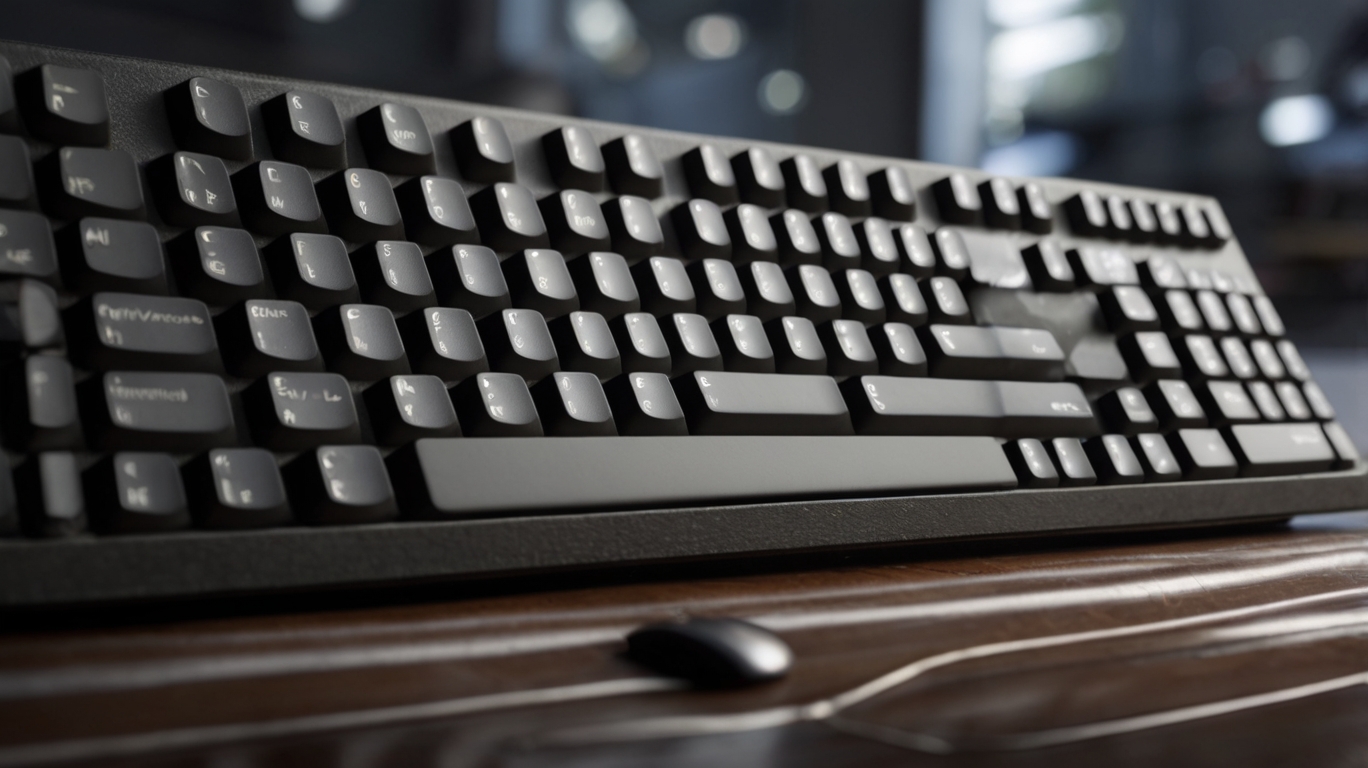How to Fix an Unresponsive Computer Keyboard



Learn how to troubleshoot an unresponsive computer keyboard with this step-by-step guide. From connecting to cleaning and more.
In this post, I’ll walk you through the steps to fix an unresponsive computer keyboard. Whether you use an external keyboard or a laptop’s built-in keyboard, these tips will help you identify and fix the problem. We’ll use straightforward, simple language so anyone can follow along and get their keyboard working again.
1. Check the connection
Before you panic, make sure your keyboard is properly connected. If it’s an external keyboard, check that the USB cable is firmly inserted into the computer’s port. If you’re using a wireless keyboard, make sure the USB receiver is properly connected and that the keyboard has charged batteries.
Step by Step:
– Disconnect and reconnect the USB cable.
– If it is wireless, replace the batteries with new ones.
– Make sure the wireless receiver is connected properly.
2. Restart your computer
Sometimes the simplest solution can be the most effective. Restarting your computer may resolve temporary issues affecting the keyboard’s functionality.
Step by Step:
– Save any unsaved work.
– Restart the computer from the boot menu.
– Once the computer restarts, check if the keyboard is responding.
3. Clean the keyboard
Over time, dust and debris can build up under the keys, which can cause some of them to not respond properly. Cleaning your keyboard can fix this problem.
Step by Step:
– Turn off the computer or disconnect the keyboard.
– Use a can of compressed air to blow dust and debris from between the keys.
– Use a slightly damp cloth to clean the keyboard surface.
– For external keyboards, you can flip the keyboard over and gently shake it to remove any trapped debris.
4. Update or reinstall keyboard drivers
Drivers are programs that allow your operating system to communicate with your hardware. If your keyboard drivers are outdated or corrupted, they can cause your keyboard to not work properly.
Step by Step:
– Go to “Device Manager” on your computer.
– Find the “Keyboards” section and expand it.
– Right-click on your keyboard and select “Update driver.”
– Follow the instructions to find and install the latest driver.
– If the update doesn’t work, try uninstalling the driver and restarting your computer to allow Windows to reinstall automatically.
5. Check the Keyboard Settings

Sometimes keyboard settings can be changed inadvertently, causing malfunctions. Checking and adjusting these settings may resolve the issue.
Step by Step:
– Open the “Control Panel” and go to “Keyboard Settings”.
– Check that the language and keyboard layout are correct.
– Make sure there are no accessibility settings enabled that may affect keyboard behavior.
6. Test the keyboard on another computer
To determine if the problem is with the keyboard or the computer, test the keyboard on another device. If the keyboard works on another computer, the problem is with your original machine.
Step by Step:
– Connect the keyboard to another computer.
– If it works, the problem is with your original computer.
– If it doesn’t work, the keyboard may be damaged.
7. Check for Software Conflicts
Sometimes, certain programs or processes can cause conflicts that affect the way your keyboard works. Starting your computer in “Safe Mode” can help you identify if this is the problem.
Step by Step:
– Restart your computer in “Safe Mode.” In Windows, you can do this by pressing F8 during startup.
– Check if the keyboard works in “Safe Mode”.
– If it works, the problem may be related to a specific program or process running in normal mode.
8. Perform a virus and malware scan
Malware can cause a variety of problems on your computer, including keyboard malfunctions. Perform a full system scan to ensure your computer is free of viruses and malware.
Step by Step:
– Use a reliable antivirus program to perform a full scan.
– Remove any detected threats.
– Restart your computer and check if the keyboard responds.
9. Reset BIOS settings
The BIOS (Basic Input/Output System) controls many basic functions of your computer’s hardware. Resetting the BIOS to its default settings may resolve keyboard-related issues.
Step by Step:
– Turn off the computer and turn it back on.
– Press the corresponding key (usually F2, F10 or Del) to enter the BIOS setup.
– Look for a reset to defaults option and select it.
– Save changes and restart your computer.
10. Consider replacing the keyboard
If you have tried all the steps above and the keyboard is still not responding, it may be damaged beyond repair. In this case, consider replacing the keyboard.
Step by Step:
– If it is an external keyboard, buy a new one and connect it.
– If it is a laptop keyboard, you may need to take it to a specialized technician to replace the internal keyboard.
Conclusion
Fixing an unresponsive keyboard may seem like a daunting task, but by following these steps you can identify and resolve most common problems. From checking the connection and restarting your computer, to cleaning your keyboard and updating drivers, there are plenty of solutions you can try before you consider replacing your keyboard. Always remember to work carefully, especially when handling internal components or accessing BIOS settings. If all else fails, don’t hesitate to seek professional help.
These tips are designed to be easy to follow and effective, helping you get back to using your keyboard without any problems. Good luck!
Post views: 3





